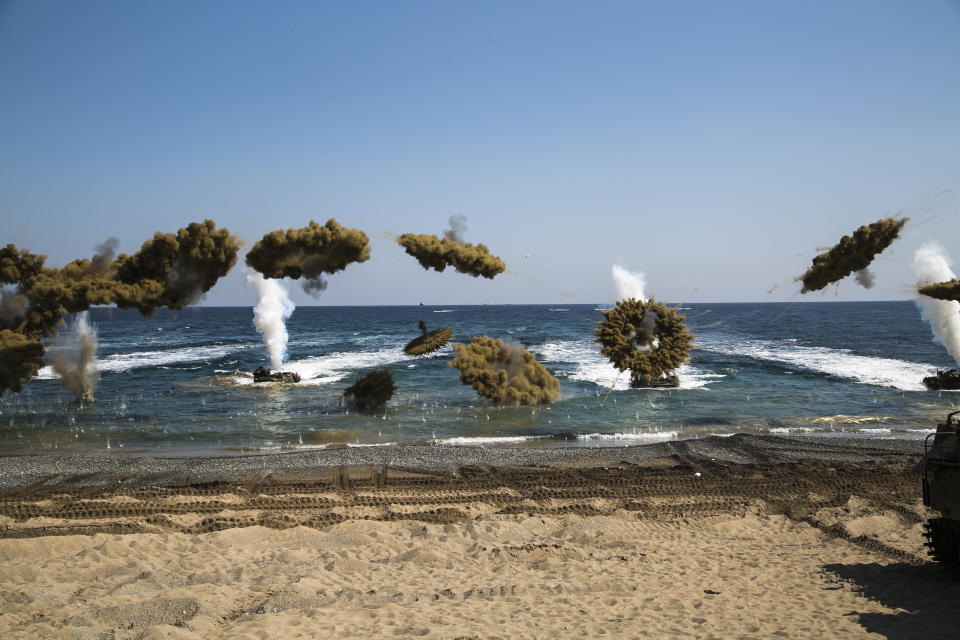What a Rehearsal Invasion of North Korea Looks Like
The U.S. and South Korean militaries just wrapped up a massive amphibious drill designed to mimic an attack on the North Korean capital of Pyongyang in the event of war. The exercise culminated in a massive naval task force sending a force of Marines against a simulated defended beach. Here's footage of the amphibious task force at sea, and landing footage featuring the AAV7s:
In just the last three months, the regime of North Korean dictator Kim Jong-un has detonated a nuclear bomb, tested a space rocket, and appeared publicly in front of a model of a nuclear warhead and intercontinental ballistic missile. His regime repeatedly threatens to unleash a nuclear attack on the United States. In response, the U.S. and South Korea are practicing how they would kill or capture Kim and his cronies in the event of real war.
The superior strategic and tactical mobility of U.S. and South Korean forces means they can do an end-run on the 160-mile long, heavily fortified demilitarized zone and strike directly against Pyongyang from the sea. The 2016 version of war exercise Ssang Yong (Korean for "Twin Dragons") saw not one but three large amphibious transports teaming up: USS Boxer, USS Bonhomme Richard, and ROKS Dokdo. Including supporting vessels, the task force could land a combined force of about 5,000 marines.
A major part of the drill involved a beach landing by South Korean and U.S. Marines. AAV7 amphibious assault vehicles from both countries staged a joint landing on a South Korea's Dokseok-ri Beach. In the video, a drone flies overhead as a wave of at least nine AAV7s approaches the beachhead, swimming abreast. The "gators" are using their smoke generators, which burn fuel from the diesel engine to create a white smokescreen.
In the last few moments before landing, all vehicles simultaneously pop their onboard smoke grenades. Each AAV7 can fire eight smoke grenades at once, forming a dirty gray donut-shaped smoke formation. The smokescreen and the smoke grenades combined do a pretty good job of of hiding the lightly armored transports just before landing. Here's a high speed shot of the grenades detonating, before the smoke disperses:

Each AAV7 carries typically 18 to 21 Marines, so nine vehicles hitting the beach at once puts an entire company of nearly 200 heavily armed troops on the ground.
Amphibious assaults no longer come completely by sea. These days, they're complemented with an air assault whenever possible. At the same time Marines are hitting the beach, MV-22 Ospreys and CH-53E transports would be landing an equal number of Marines far inland, complicating the enemy's response.
In the long term, the practice of amphibious assaults aimed at Pyongyang puts the North Korean regime on the horns of a dilemma. A very large portion of the North Korean military is deployed near the demilitarized zone with South Korea, which would allow Kim Jong-un to order an attack on the South. A lack of fuel and modern transportation would make it difficult for him to quickly redeploy these forces to defend the capital. If the U.S. and South Korea make an invasion by sea a credible threat, the North Korea could be forced to shift its military away from the border to protect the regime's of power.

